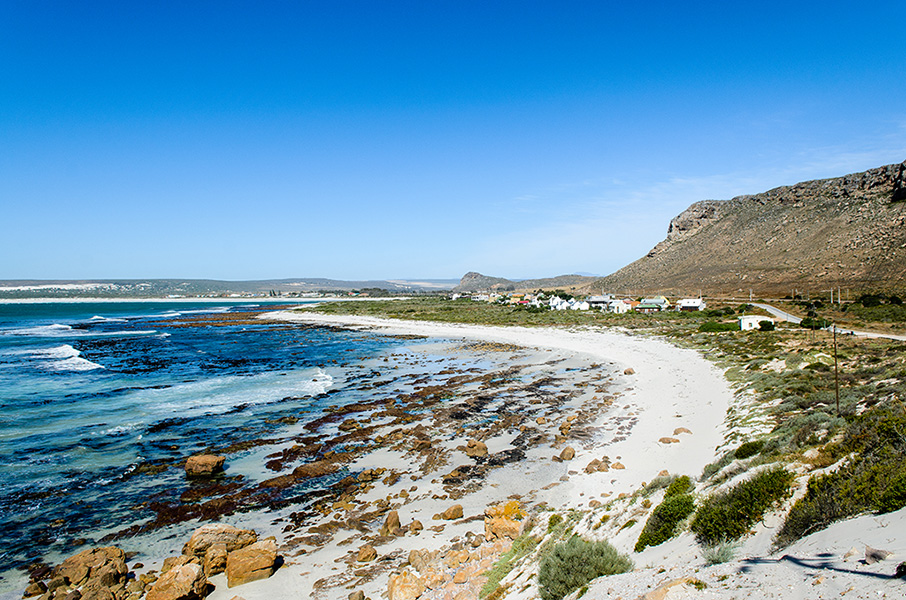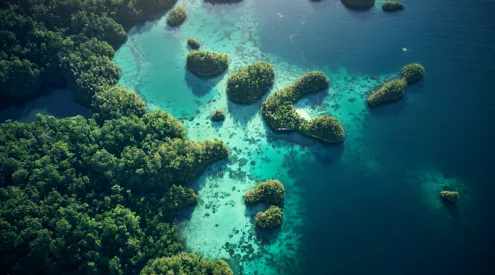A destructive red tide has emerged in the waters of Elands Bay on the West Coast. The tide occurs when a damaging algal bloom flourishes, causing various marine species to wash ashore. These include rock lobsters, octopus, white mussels and a number of fish species.

The Southern end of Eland’s Bay has only privately owned houses on partially tarred roads that eventually lead down to the beach. Photo by Adriaan Louw/ Getaway Gallery.
Red tides are a natural phenomenon in coastal waters caused by a dense accumulation of microscopic algae. Some of the algal species are harmful because they contain toxins, which are poisonous to humans.
The Department of Environment, Forestry and Fisheries said in a statement that conditions are not favourable as a North Westerly wind is keeping the algal bloom concentrated in the bay.
‘Red Tides are particularly common in the productive West coast upwelling regions, such as the Benguela, California, Humboldt, Canary and Somali upwelling systems. In the Benguela upwelling region off the West Coast of Southern Africa,’ said the Department in a Tweet.
These blooms are dominated by a group of phytoplankton known as dinoflagellates and their inshore accumulation, particularly during periods of calm often leads to their decay and the subsequent development of low oxygen conditions which cause marine mortalities.
— Environmentza (@environmentza) January 17, 2021
‘Notwithstanding the Red Tides, West coast rock lobster catches are still good and this indicates that oxygen levels are still high. The new moon spring tide occurred 2 days ago, thus limiting the possibility of a mass stranding within the next 10 days,’ said the Department.
A Situation Yellow alert was issued in terms of the West Coast Rock Lobster Contingency Plan. All government role-players were placed on standby by the Department too.
‘In terms of the Contingency Plan, the Department of Environment, is the lead department, supported by the following organs of state: West Coast District Municipality, Cederberg Municipality, South African Police Services, SANDF and Western Cape Provincial Administration. These role-players are currently preparing for a Situation Red because beaching has taken place and there is a possibility that there may be beaching in excess of 10 tons at a single or multiple localities in the area,’ continued the statement.
Other Red Tides cause harm through the depletion of oxygen (anoxia), which affects all marine creatures and can lead to mass mortalities of the entire marine communities or mass walkouts of rock lobsters that try to escape the anoxic conditions. #ElandsBayRedTides
— Environmentza (@environmentza) January 17, 2021
Red tides have previously occurred in summer and late summer. The situation now has seen an accumulation of a large red tide in the greater St. Helena Bay region over the past few weeks. The phytoplankton bloom currently extends 50-60 kilometres in the vicinity of Elands Bay, Lambert’s Bay and Doring Bay.


















